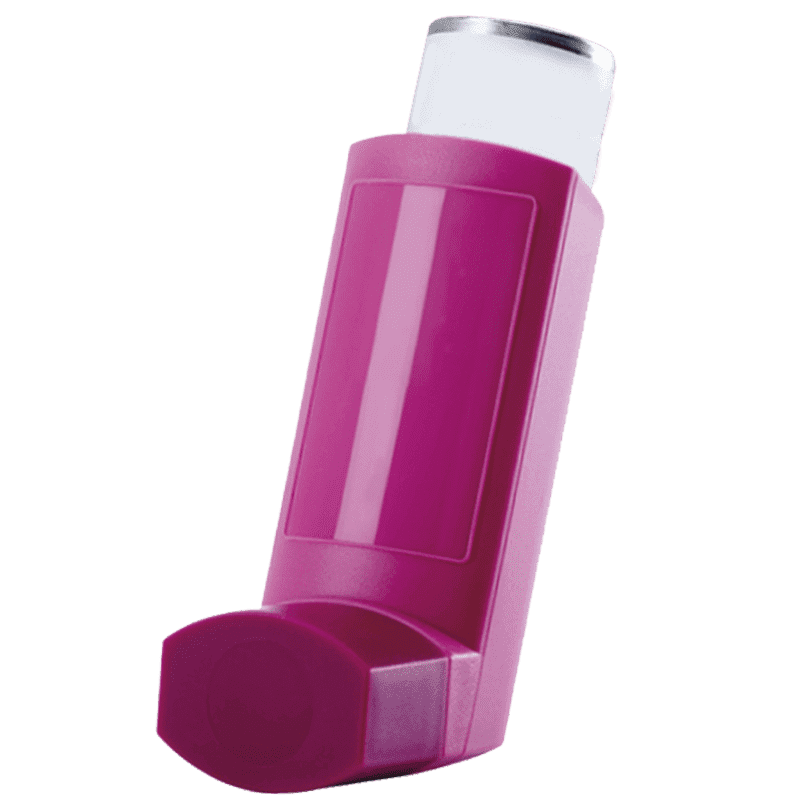Always Read The Patient Information Leaflet
Medicines can cause side effects. Always read the leaflet that comes with your medication and report any side effects to your pharmacist. Stay informed—order safely today!
This product requires an account to purchase. Please login for further details.
Need Express Delivery? Order now!
Westbury Chemist is a GPhC-registered pharmacy (Registration No. 1041186) operated by qualified pharmacists, providing professional and regulated healthcare services
Fostair is a combination inhaler that contains two types of medication to manage symptoms of asthma and COPD. Beclometasone dipropionate is a corticosteroid (not the anabolic kind; these steroids help reduce inflammation), and Formoterol fumarate dihydrate is a bronchodilator that relaxes your muscles to aid breathing.
Asthma and chronic obstructive pulmonary disease (COPD) have similar symptoms that cause airway inflammation, making it hard to breathe. The Fostair inhaler uses a dual-action approach, with both medicines working together to ease your symptoms and provide lasting relief from asthma-related shortness of breath, chest tightness, and wheezing. It also helps alleviate COPD symptoms.
Fostair contains two active ingredients that work together to reduce inflammation from asthma and COPD. The pressurised inhaler helps to open up the airways, making it easier and more comfortable for you to breathe.
Corticosteroids are like artificial versions of hormones that your adrenal glands naturally produce. Steroid inhalers provide you with more of these hormones, which helps to reduce your body's inflammatory reaction to asthma triggers. Bronchodilators, on the other hand, help by relaxing the muscles in your lungs and widening your airways.
Fostair can be used both as a long-term preventer and as a quick reliever (only the 100/6mcg strength) if your symptoms suddenly get worse. A severe case of this is often referred to as an asthma attack. Our clinicians can guide you on using a separate reliever inhaler if you're using Fostair just for maintenance therapy.
Fostair comes in two different strengths: 100/6mcg and 200/6mcg.
You're always in control of your asthma treatment. Since asthma can vary from person to person, it's a good idea to consult an expert about the best starting dose for you. If you begin with the lower dose we provide and find it's not giving you enough relief, you can easily move to the higher dose if needed.
Fostair can serve as both a preventer and a reliever for asthma, but only in the 100/6mcg strength. These combination inhalers are sometimes referred to as ‘pink’ inhalers. Inhalers are often identified by colour to indicate their purpose, like the more familiar blue inhalers for relief and brown inhalers for prevention.
If you're using your Fostair inhaler just for maintenance, you shouldn't exceed 4 puffs a day, regardless of the strength. However, if you're using the 100/6mcg strength inhaler for both maintenance and relief, you can take up to 8 puffs a day.
We recommend you stick to your prescribed dose and see if your symptoms get better before changing it. If you need a separate reliever, our experts can provide guidance.
Asthma treatments are primarily about helping you breathe better. Inhalers and tablets work by reducing inflammation in your lungs to keep your airways clear. COPD, while similar, is a bit more complicated as it involves more than just easing airflow obstruction. For this reason, it's a good idea to chat with our team if you have any questions about using Fostair for COPD treatment.
The active ingredients in your Fostair pressurised metered dose inhaler (pMDI) are exactly the same as those in the Fostair NEXThaler. Both are just as effective in managing your symptoms, so the simple answer is no, there's no difference in effectiveness. In fact, research has shown very little difference between the two inhalers, meaning neither is superior as a treatment option. The main distinction lies in how you use them — the NEXThaler is a dry powder inhaler (DPI), so the technique for using it is slightly different from the Fostair pMDI.
The pressurised metered dose inhaler we provide should be sufficient to manage your asthma symptoms.
Asthma management is usually done in stages. Your clinician will determine the medication and dosage you require based on how severe your symptoms are. Some people only need a reliever when their asthma flares up. The assessment considers various factors, including risk factors, adjustments, and regular reviews.
If your blue inhaler isn't doing the trick, you might be advised to use it alongside a corticosteroid preventer inhaler such as Pulmicort or Clenil Modulite. If you've been prescribed Fostair, it might be because other corticosteroid inhalers with beclometasone dipropionate aren't giving you enough relief.
Fostair contains extra-fine particles, allowing it to reach your lungs more effectively than other inhalers with the same ingredient.
This means that instead of being stronger, Fostair is more effective at reaching the areas where it needs to work to relieve your symptoms.
Fostair is one option for managing your asthma, and you might be curious about other available treatments. Before prescribing any medication, our experts will evaluate your needs and recommend an inhaler they believe is most suitable for you.
Montelukast tablets are taken once a day and are typically prescribed when someone's asthma isn't well managed with both preventer and reliever inhalers. When asthma requires more than just a reliever inhaler, it is often treated by using brown corticosteroid inhalers, such as Pulmicort and Clenil, along with blue inhalers like Bricanyl and Ventolin.
This combination could be suitable for you, but the extra-fine particles in Fostair make it an excellent option for those who feel other alternatives aren't effective enough.
Similar to steroid inhalers, combined inhalers like Fostair can have side effects, but they're generally mild and easy to prevent. You might experience a dry mouth, hoarseness, a sore throat, or oral thrush. However, rinsing your mouth after each use can help you avoid these issues. Using a volumatic spacer can also be beneficial in preventing them.
If you notice any of the less common side effects, like a skin rash or wheezing, it might indicate an allergy to something in the inhaler. If this happens, stop using it straight away and get medical help right away.
Fostair is typically prescribed in two different ways:
Our healthcare professionals will guide you on how to use your Fostair properly, including which blue inhaler to select if you require one. Once your asthma is under control, you'll find you need to use a reliever far less frequently.
You should store both doses of Fostair in the fridge at a temperature between 2-8℃, so pop your inhaler in there as soon as it arrives.
Make sure your inhaler doesn't get too warm, and don't use it more than 3 months after it arrives. Your Fostair will have an expiry date on the box – never use the inhaler after this date.
There are many effective treatments for asthma and COPD, but what helps one person might not be suitable for someone else.
Here's all the official information about it.
If you have any questions about this treatment or other options, feel free to ask one of our team members.

At Westbury Chemist, we prioritise your security and peace of mind when shopping with us. Here's how we ensure a safe and reliable experience:
Shop with confidence at Westbury Chemist, where your safety and satisfaction come first.
Medicines can cause side effects. Always read the leaflet that comes with your medication and report any side effects to your pharmacist. Stay informed—order safely today!

Superintendent pharmacist with 20+ years of experience. Specialises in acute respiratory diseases, UTIs, musculoskeletal issues, and more

Independent Prescribing Pharmacist specialising in ENT, hypertension, and weight loss management

Independent Clinical Prescribing Pharmacist with expertise in asthma, COPD, and long-term disease management
OPEN till
OPEN
OPEN

